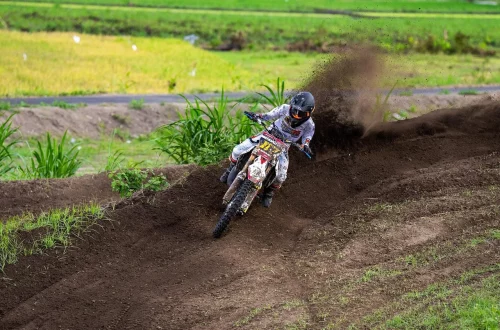
Understanding Dog Knotted Anal Behavior and What It Means
Understanding the behaviors of dogs can sometimes be perplexing, especially when it comes to their more peculiar actions. Among these behaviors is the phenomenon of “knotted” anal behavior, which is often observed during mating but can also occur in various contexts unrelated to reproduction. This behavior can evoke curiosity and concern among dog owners, leading to questions about its implications and significance.
Dogs, as social and instinct-driven animals, exhibit a range of behaviors that stem from their evolutionary background. Understanding these behaviors requires a deeper look into canine instincts, social structures, and communication methods. The knotted behavior can be a source of confusion and misunderstanding, and it’s essential to approach this topic with an open mind and a willingness to learn.
This behavior is not solely about reproduction; it can also indicate other factors such as dominance, stress, or even medical concerns. By examining the reasons behind this behavior, dog owners can gain insights into their pets’ needs and emotional states, fostering a healthier and more understanding relationship. As we explore this topic, it is crucial to remember that each dog is unique, and their behaviors can vary widely based on their individual backgrounds and experiences.
What Causes Knotted Anal Behavior in Dogs?
Knotted anal behavior in dogs is primarily associated with the mating process, specifically in male dogs. During mating, the male’s penis swells, which can lead to a physical “tie” between the male and female. This is a natural biological process designed to ensure successful reproduction. However, this behavior can also be observed in dogs that are not engaged in mating or are neutered, prompting questions about other potential causes.
One significant factor contributing to this behavior is the dog’s instinctual drive. Dogs are territorial animals and often engage in behaviors that assert their dominance or claim over a particular area or partner. In some cases, a dog may exhibit knotted behavior as a way to establish its position within a social hierarchy, whether among other dogs or even with humans.
Additionally, stress or anxiety can manifest as unusual behaviors, including knotted anal behavior. Dogs that are feeling threatened or uncomfortable may resort to actions that are not typical for them. This behavior can sometimes be a coping mechanism, reflecting their emotional state rather than a purely physical response.
Moreover, medical conditions might also influence this behavior. Infections, irritations, or injuries in the anal region can lead to discomfort, prompting a dog to engage in behaviors that may be interpreted as knotted behavior. It’s essential for dog owners to monitor their pets and consult a veterinarian if they notice persistent or unusual behaviors, as this could indicate underlying health issues that need addressing.
Understanding the multifaceted causes of knotted anal behavior can help dog owners respond appropriately. Whether it’s a matter of instinct, social dynamics, or health concerns, recognizing the underlying reasons is critical in providing the necessary support and care for their pets.
The Role of Social Dynamics in Canine Behavior
Social dynamics play a crucial role in shaping canine behavior, including acts that may be perceived as knotted anal behavior. Dogs are inherently social creatures, relying on a complex hierarchy and communication system within their packs. Understanding these social structures can shed light on why a dog may engage in certain behaviors, particularly those related to dominance, submission, or territorial display.
In a multi-dog household, the interactions between pets can significantly influence behavior. Dogs often communicate through body language, vocalizations, and various physical behaviors. A male dog may exhibit knotted behavior as a demonstration of dominance over a female or another male. This behavior can serve as a way to assert control and establish rank within the group, reflecting the natural instincts that drive many of their actions.
Furthermore, socialization experiences can impact a dog’s behavior. Dogs that have not been adequately socialized may struggle with appropriate interactions, leading to confusion and misinterpretation of social cues. For instance, a lack of understanding about mating behaviors could cause a dog to engage in knotted actions with other dogs or even objects, as they attempt to navigate their social environment.
In addition, changes in the household, such as the introduction of a new pet or changes in owner dynamics, can lead to shifts in behavior. Dogs are sensitive to their environment and the emotional states of those around them. If tensions rise within the household, a dog may respond with behaviors that indicate stress, including knotted actions.
Promoting healthy social dynamics among pets is essential for reducing anxiety and fostering appropriate behaviors. Providing structured interactions, supervised playtime, and positive reinforcement can help dogs develop better social skills, minimizing the likelihood of confusion or stress-related behaviors. Ultimately, understanding the social dynamics of dogs allows owners to create a harmonious environment that supports their pets’ emotional and social needs.
When to Seek Veterinary Advice
While understanding canine behavior can often provide insights into a dog’s actions, certain situations warrant professional veterinary intervention. Knotted anal behavior, especially if persistent or accompanied by other concerning symptoms, can indicate underlying health issues that require attention.
One of the primary reasons to seek veterinary advice is if a dog displays signs of discomfort or distress during the knotted behavior. If a dog is whining, growling, or exhibiting signs of pain, it is essential to consult a veterinarian. These symptoms may suggest infections, anal gland issues, or other medical conditions that need to be addressed to prevent further complications.
Additionally, changes in a dog’s behavior can signal health concerns. If a previously well-adjusted dog suddenly begins to exhibit knotted behavior or other unusual actions, it may indicate an underlying issue that requires exploration. Factors such as hormonal imbalances, infections, or stress-related conditions can manifest in various ways, and a veterinarian can help identify and treat these concerns effectively.
Routine veterinary check-ups are also vital in maintaining a dog’s overall health. Regular examinations can help catch potential health issues early, allowing for timely intervention. In cases where knotted anal behavior is linked to health problems, early detection can lead to more effective treatments and better outcomes for the dog.
In conclusion, while knotted anal behavior can have various explanations, it is crucial for dog owners to stay vigilant and informed. If there are ever concerns regarding a dog’s health or behavior, seeking veterinary advice is always the best course of action.
**Disclaimer:** This article is for informational purposes only and is not intended as medical advice. If you have concerns about your dog’s health or behavior, please consult a qualified veterinarian.




